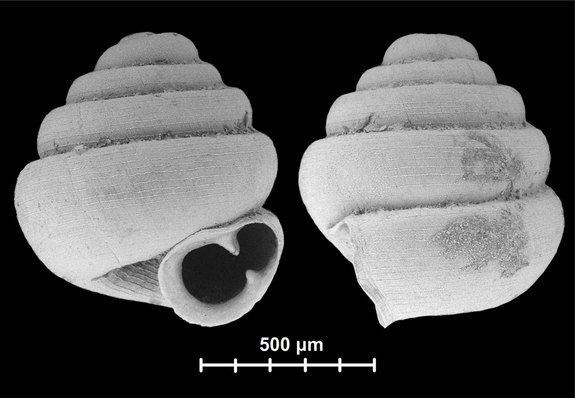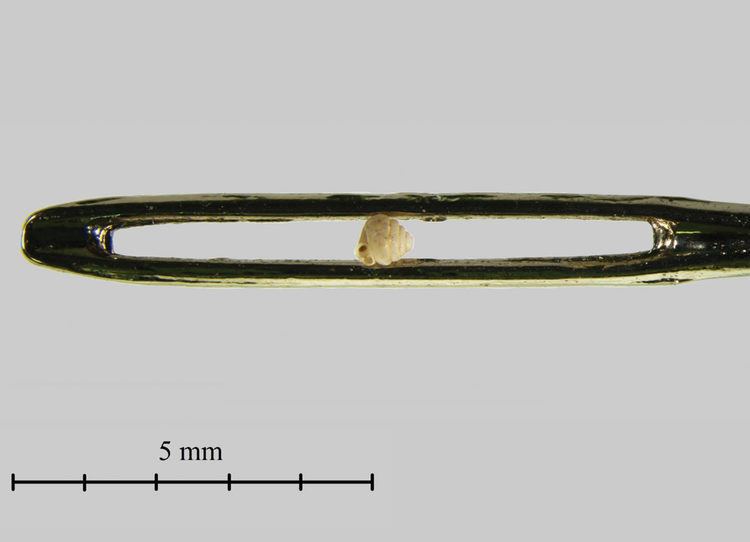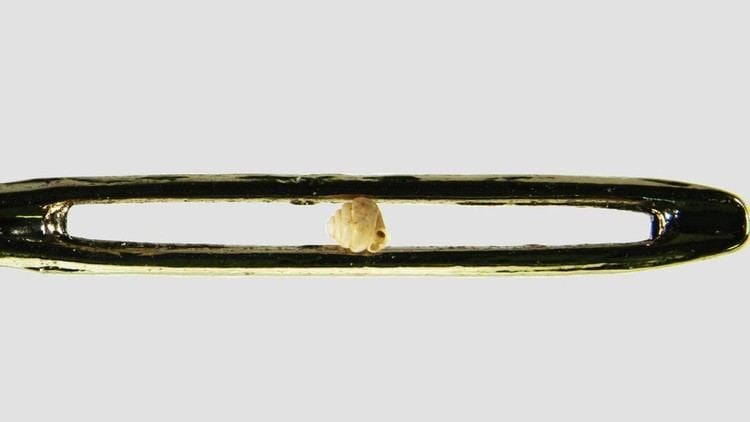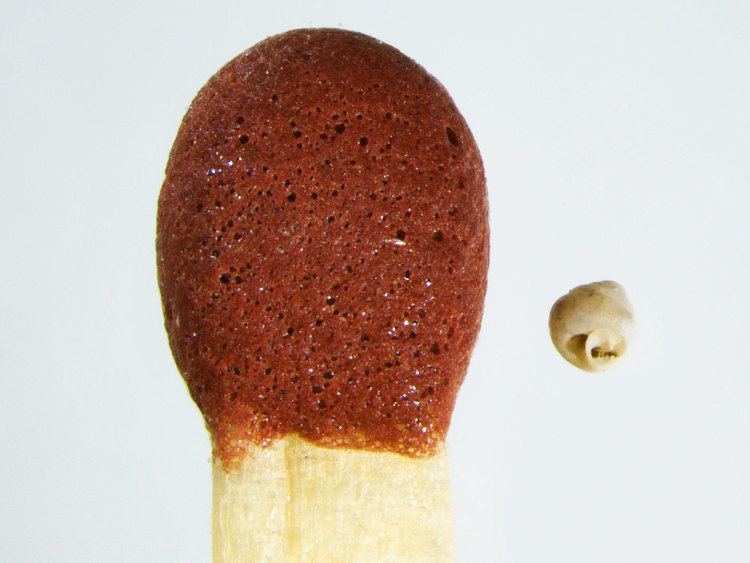Rank Species | Family Hypselostomatidae | |
 | ||
Class Gastropodaclade Heterobranchiaclade Euthyneuraclade Panpulmonataclade Eupulmonataclade Stylommatophorainformal group Orthurethra Similar Acmella nana, Hypselostomatidae, Acanthophis cryptamydros, Acanthopleura granulata, Orthurethra | ||
Angustopila dominikae world s smallest land snail
Angustopila dominikae is a species of land snail, a terrestrial pulmonate gastropod mollusk in the family Hypselostomatidae. It occurs in southern China, and is thought to be one of the world's smallest terrestrial mollusks (the holotype's shell height is 0.86 mm). As is the case in most other members of the genus Angustopila, A. dominikae is a troglobiont species, and displays high levels of endemism.
Contents
- Angustopila dominikae world s smallest land snail
- Name
- Physical Characteristics
- Origin
- Diet
- Reproduction
- Conservation Status
- References
Name
The snails were named after Páll-Gergely's wife, Dominika. [1]
Physical Characteristics

[2] The Angustopila dominikae holotype has a shell that is light grey in colour, which consists of 1.5 whorls when it is a protoconch. The protoconch is finely pitted and granular and collectively radiates from the nuclear whorl and ceases at the second.
Origin

This new species was found in a soil sample of limestone rocks at the base of a cliff in Guangxi and likely lives on the walls of the limestone.[3]
Diet

The diet of these snails consist on microorganisms like bacteria and fungal filaments. Jochum hypothesizes that the round shape of the shells of these new species may enable them to wedge themselves into tiny cracks in rocks. It could also allow them to trap air bubbles in their shell and float in water if they become dislodged by rain, and also probably enables them to survive being eaten by a bird.
Reproduction
These snails are most likely hermaphroditic and change their sex based on what other snails are around.[4]
Conservation Status

Since the species is known from one site only, it is evaluated as Critically Endangered under IUCN criteria. Quarrying is quoted as the main threat to similar limestone habitats. However, no ongoing threats to the type locality are known at the moment.

